Kantos aren’t what many would consider to be a traditional vocal ensemble. They set out to perform music that is at the cutting edge of the creative scene.
The story being told on this occasion was the Passion of Christ; a story of Christ’s betrayal, suffering, and crucifixion. It is also a strikingly resonant situation to the present, as a mother looks on at her dying child who’s been killed by an invading army. The choir’s curated programme aimed to also explore some of the most dramatic emotions – pathos, pain, and passion – in our troubled times.
But what was remarkable was how poignant this evening of dramatic vocal music was.
The first of three performances on their tour, this evening’s concert was in Christ Church, West Didsbury. Seats quickly filled for this hotly anticipated show. Their musical director, Ellie Slorach, stood alone at the front of the church, beginning with a few formalities through a beaming smile. Her one request was that the audience hold their applause until the end of each act, allowing each piece to segue into another on this cathartic journey.
“A remarkable, poignant evening of dramatic vocal music… A rapturous applause could not have been more justified.”
And so the performance opened, with a solo bass voice singing a beautiful melody from the back of the room. This was followed by a soprano, singing a similar idea. Then emerged the choir, humming an ethereal arrangement of the hymn Walking in a Garden. They walked in a procession down the aisles, immersing the audience in harmonies, until they had assembled by Slorach at the front of the room.
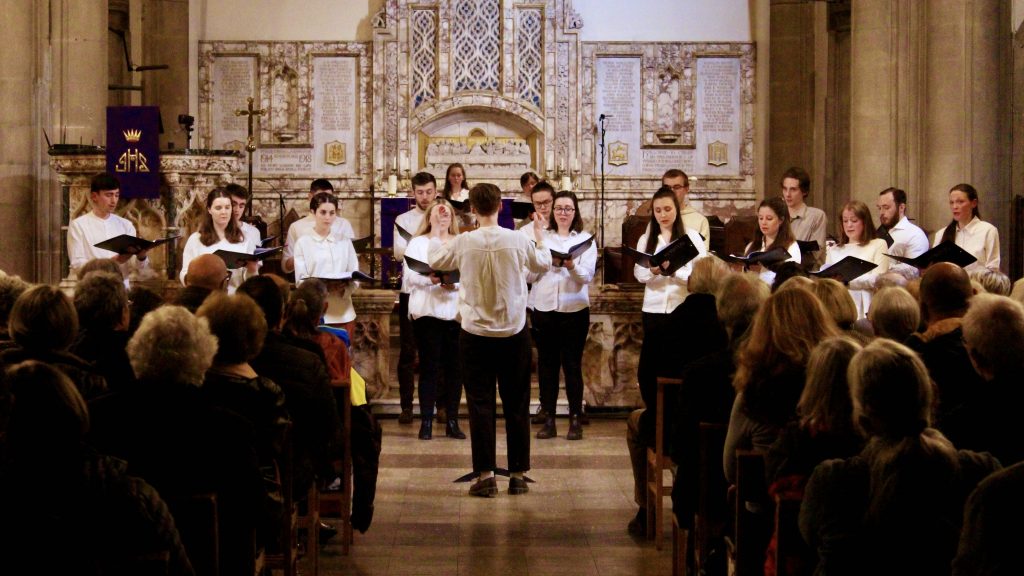
In just a moment, Kantos had transformed a church in Didsbury into the Garden of Gethsemane – the space awash with peace and tranquillity. These harmonies slowly turned to whispers, until the whole choir were chanting the following phrase to set the scene for The Passion:
‘I tell you this; today you shall be with me in Paradise’
Slorach then led the choir into Gjeilo’s Ubi Caritas. This piece features some heart-wrenching melodies over rich, enveloping harmonies. Kantos truly found this exquisite balance, taking such a hymn in their stride. I found that they did not dwell on the decadent harmonies for any longer than needed, as tempting as that may seem. Instead, Kantos savoured each passage as it came, before pushing on with an experienced sense of continuity. Too many times have choirs been seen to sing with overindulgence, but Kantos are not one of them.
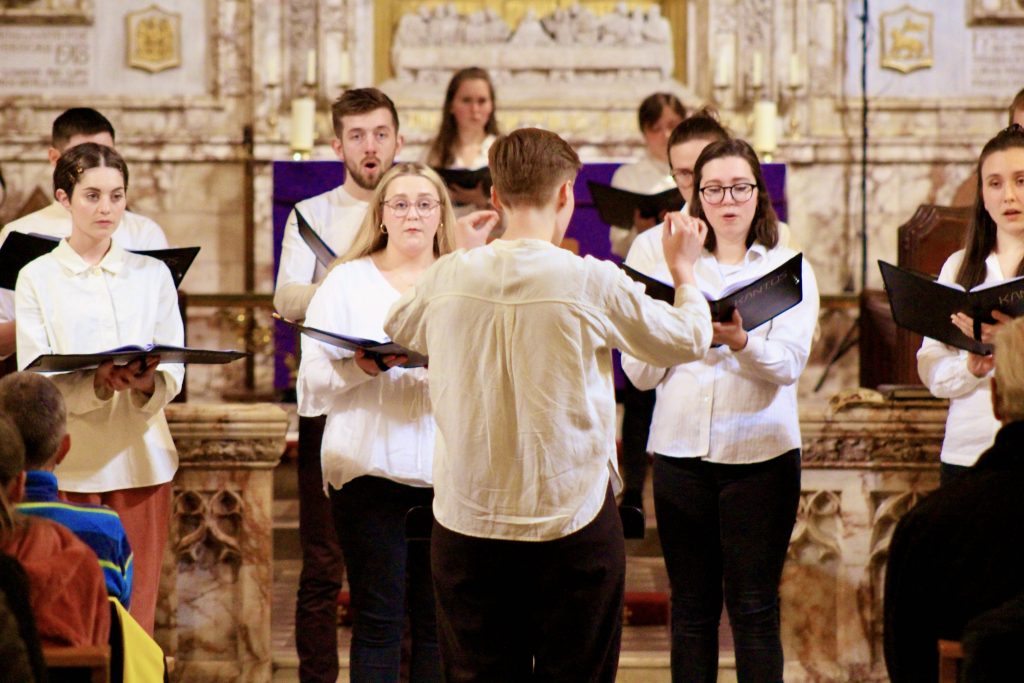
Up next was Byrd’s Mass for Five Voices: Kyrie. Byrd wrote this piece as a covert Catholic during the 16th century – a time where Catholicism in Protestant England was a crime punishable by death. The choir conveyed this emotional poignancy; each voice locking into one another in solidarity. However, it was perhaps in the next piece, Panufnik’s Kyrie after Byrd, where they truly culminated.
Written more than four centuries later, Panufnik’s reflection on Byrd’s Kyrie embraces modern harmonies, vocal bends, and a sense of mysticism. I could not see one audience member checking their programme during this piece; the entire room utterly encapsulated. It ended with a quiet reverence before the singers began whispering. One-by-one, these whispers turned into busy chatter, as though it were suddenly rush hour. Slowly but surely, each voice became more and more in sync with one-another, until the audience could finally decipher the following phrase:
‘Father, forgive them;
they do not know what they are doing’
It was a lovely way for Kantos to provide the audience with narrative grounding, which led into the next re-interpretation of a Byrd piece – Charlotte Bray’s Agnus Dei after Byrd. Guided by the upper voices, this piece was filled with fragile melodies that seemed likely to shatter at any time. But, with it being Kantos, they did not shatter. Instead, they hung above the choir, resonating around the church. Byrd’s own Agnus Dei followed for a point of tranquillity, before the dramatic Crucifixus to end the first half.
Many composers have set the crucifixion of Christ to music. Bach, for example, illustrated this suffering in his Mass in B Minor through continuously descending lines, each voice reaching the depths of their vocal ranges. Beethoven too had the choir singing lower and lower in his Missa Solemnis, before eventually coming to a complete halt.
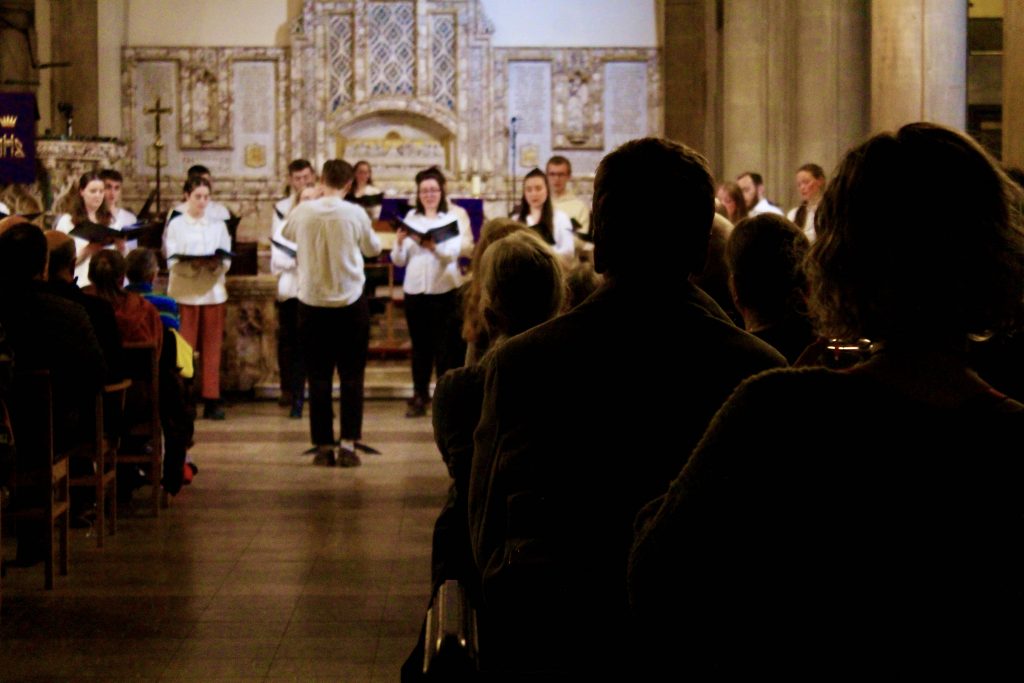
Lotti’s version however, the one sung by Kantos, approached this narrative differently. Each vocal part enters bar by bar, starting with the lowest voices. The musical texture then builds with suspensions, growing in magnitude with every dissonance and resolution. By the time the highest sopranos had entered, there was a piercing intensity around the room.
Behind the choir was a stained glass window depicting Christ on the cross. As Lotti’s Crucifixus progressed, an ominous grey light descended over Didsbury, Christ’s image slowly becoming more and more faded. Perhaps not the most unlikely of coincidences given Manchester’s weather patterns, but it certainly held a poignancy in relation to the piece being sung.
The Reproaches by Sanders finished off the first act in a profoundly moving way. The piece itself chronicles God’s gifts to his people and humanity’s response: crucifying Jesus Christ. Kantos left the audience feeling claustrophobic. Singing as God, they endlessly asked:
‘What have I done to you?
How have I offended you? Answer me!’
And so the audience were left with this, eagerly awaiting the second half. A half which would progress beyond the pronounced feeling of hopelessness which hung in the air.
Kantos picked up where they left off, this time with a world première from Tim Benjamin – a previous BBC Young Composer of the Year. His piece, Stabat mater dolorosa, sublimely portrayed the suffering of Mary during Christ’s crucifixion, literally translated to The sorrowful mother was standing. This was what the piece focused on. Benjamin himself said that he wished to focus this piece on the tragic scene of a mother weeping over the untimely death of her child.
The piece was in Latin, but much to the use of the audience members not versed in classics (like myself!), the English translations were declaimed in a dramatically heightened way. Both Benjamin and Kantos are to be praised for their composition and performance respectively for such a considerable task. I would also like to praise Sarah Keirle and Emily Brown Gibson for their solos, beautifully singing verses behind the choir as Mary in this piece.
The penultimate piece sung was Eric Whitacre’s When David Heard. A key difficulty of this piece is its principle motive of silence, but Kantos followed Slorach with such intensity that every re-entry was assured. If it wasn’t already clear by now, this piece illuminated that Kantos are a choir built on each member’s self-confidence – at times, the 18 person choir singing in 18 part harmonies.
The final chorale from Bach’s St John Passion left the audience on a beautiful note with imagery of life beyond death. Having gone through such a painful telling of Christ’s Passion, this was the positive note that was needed. A rapturous applause could not have been more justified.
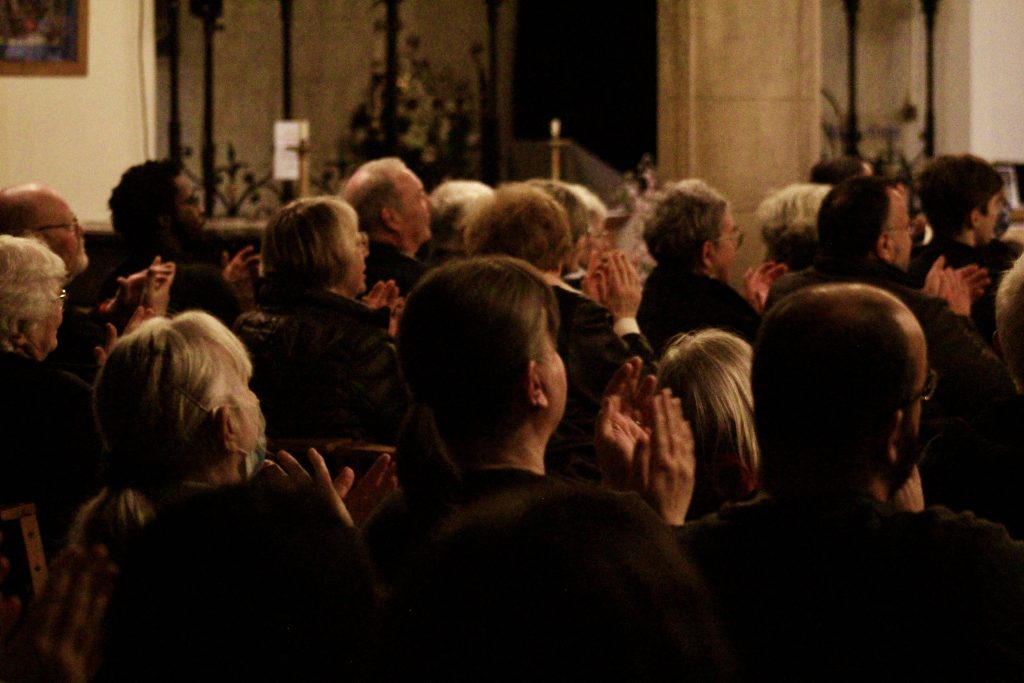
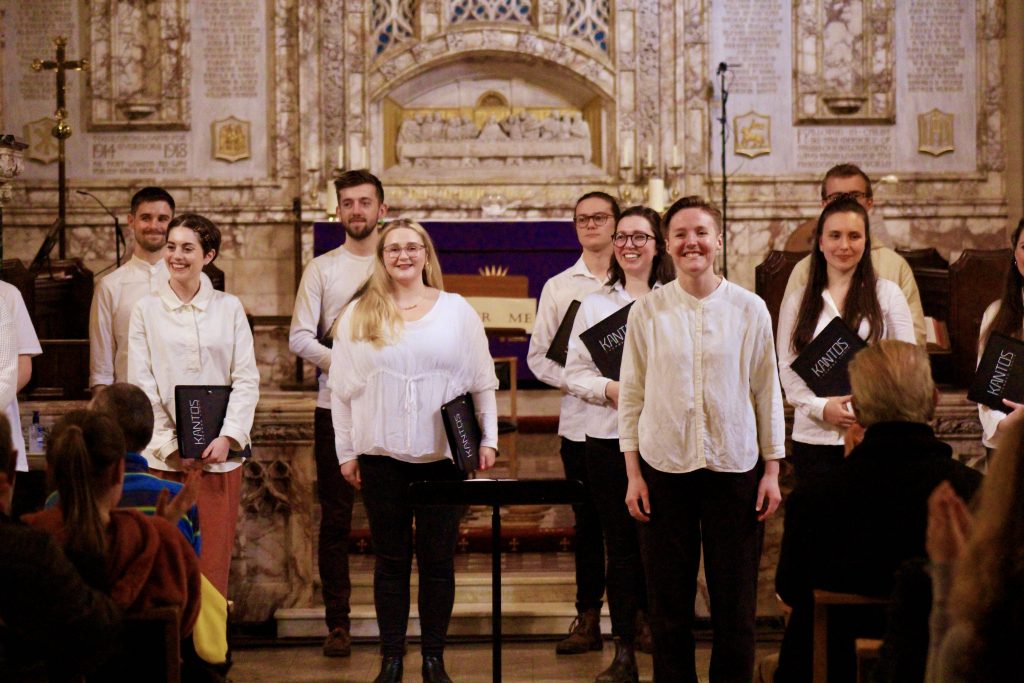















Recent Comments